If I’d been a couple of years older half a century ago, I could have gone to Vietnam on the US government’s dime, although a return trip wouldn’t have been guaranteed. For people of my generation, the idea of peacefully visiting Vietnam seems surreal – not only did thousands of us die there, but our government’s horribly misguided and destructive war left Vietnam in a shambles. After all that, you might think the Vietnamese would resent American tourists, but nothing could be further from the truth. The Vietnamese people are resilient and forgiving, and I feel genuinely welcomed here.

To me, Mumbai is the gold standard for cities that are a feast for the senses, but Hanoi runs a respectable second. The streets teem with people on foot, weaving around on scooters – there are 6.5 million scooters in this city of ten million – and tottering on bikes, not to mention a constant parade of buses, cars, and trucks.

Crossing the street requires putting one’s faith in humanity, but it all seems to work: a similar scene in most cities would have a soundtrack of horns and curses, but in Hanoi it’s just business as usual. With some sixth sense, drivers and pedestrians play a miraculously collision-free game of chicken.
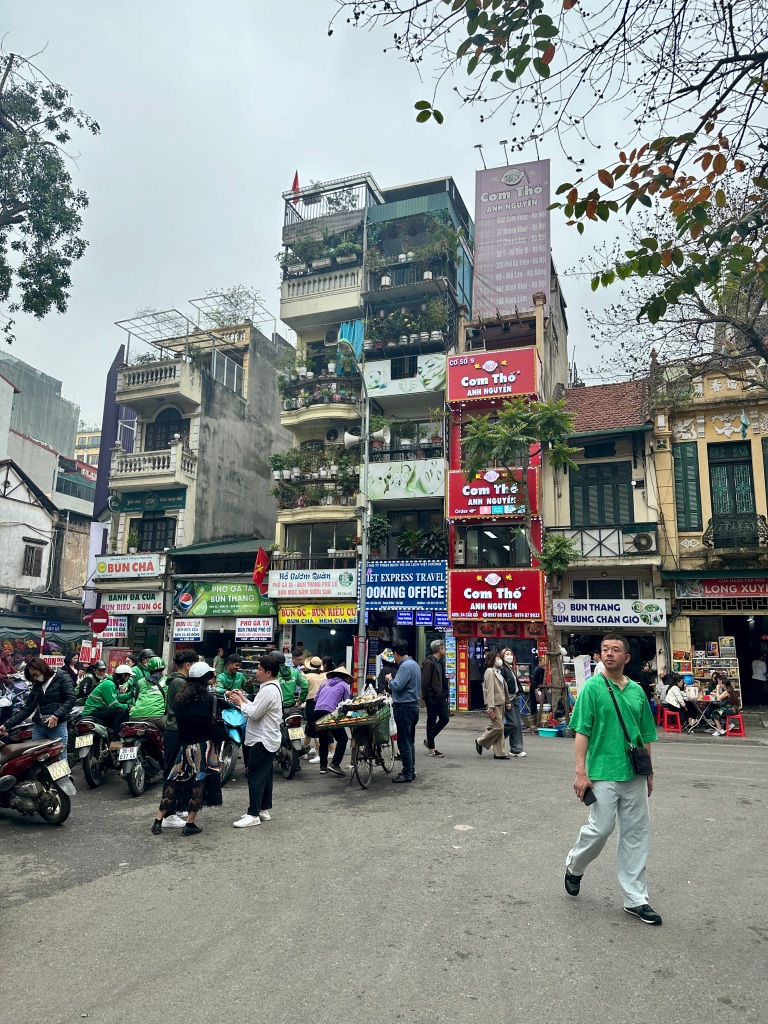
The streets are crammed with shops selling all manner of stuff – clothes, souvenirs, fresh fruits and vegetables, balloons, fans, beauty products, furniture, and pretty much anything else you do or don’t need. Beyond that, nearly every block boasts multiple coffee shops and restaurants ranging from pho places to noodle houses to pizza joints to tacos to KFC and McDonalds.
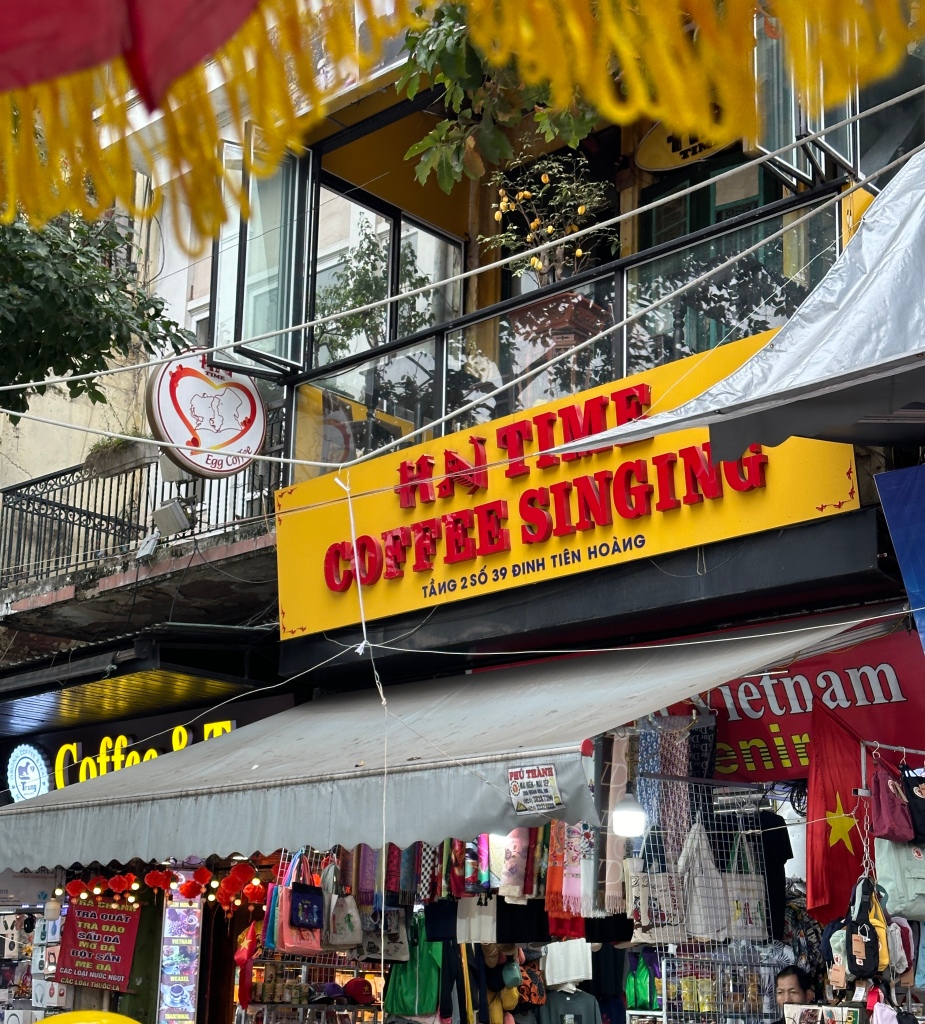
After visiting Cuba, a Communist nation where private enterprise is rigidly limited, Vietnam has come as a shock. Although Vietnam’s government is Communist, the economy is frenetically capitalist – people are free to open their own businesses, and it seems like everybody does so. In addition, unlike in Cuba, the Vietnamese people may travel without restriction, and several people I spoke with have visited the US and Europe. The only remaining trapping of a communist state that I’m aware of is a prohibition on criticizing the government, and of course such restrictions aren’t limited to communist nations.

As is my wont, I have digressed. Let me return to Hanoi. Miraculously, despite heavy bombing during the war, many stately French colonial buildings remain. Our hotel, the elegant and delightful Legend Metropole (a Sofitel property) dates to 1901.

Just down the street there’s a beautiful Opera House, completed in 1911, and many government offices, including the gorgeous Presidential Palace, occupy former colonial structures.
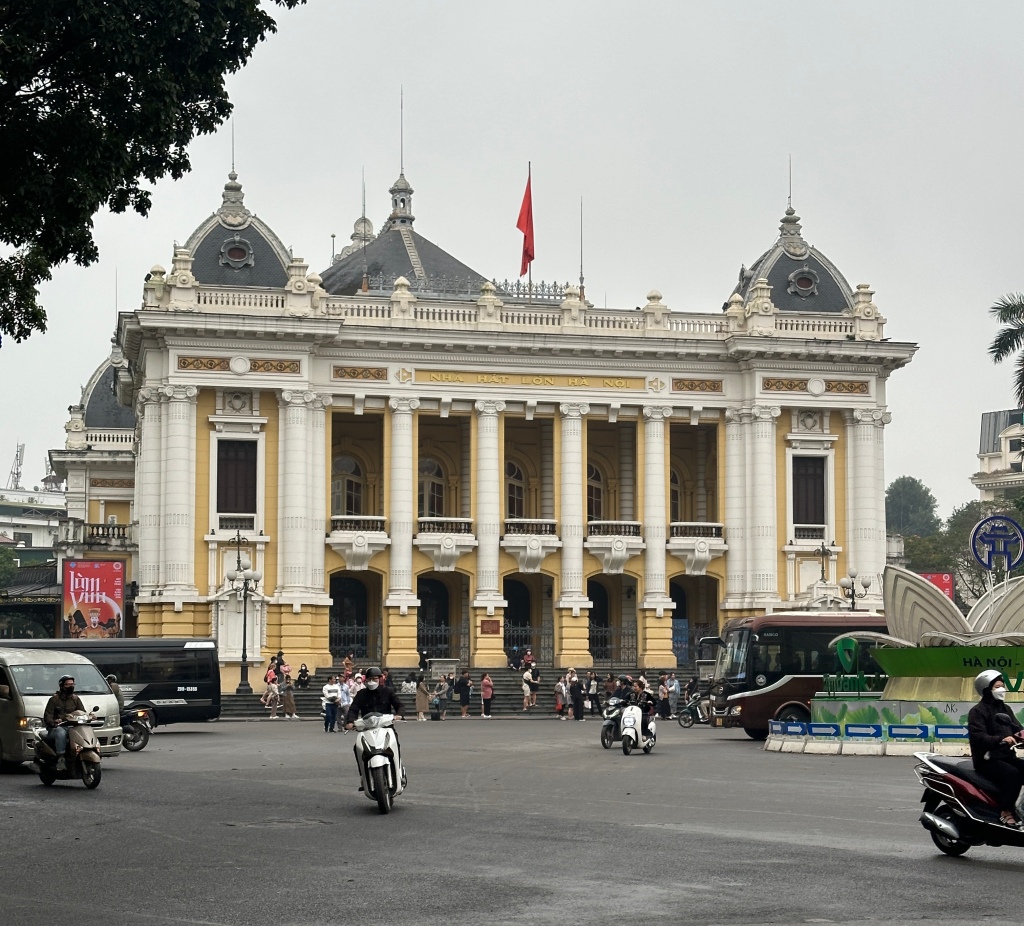
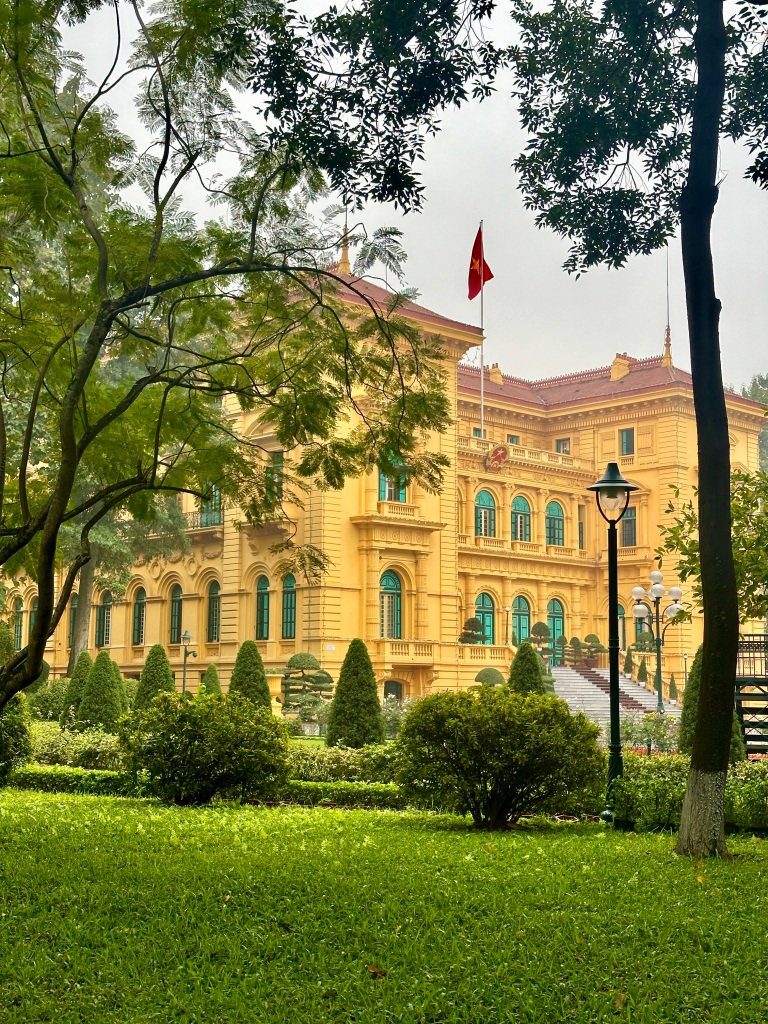

Our tour hit multiple highlights of Hanoi. We started out at the park housing Ho Chi Minh’s mausoleum and former residences. Ho is revered here in the way Fidel Castro and Che Guevara are in Cuba, and it’s understandable why. He freed Vietnam from French rule and led the fight against the Americans until his death in 1969. (Fittingly, what we call the Vietnam War, the Vietnamese call the American War.)

The park also includes the famed “One Pillar Pagoda,” built in 1049. It’s a small building perched (as you probably suspected) atop a single column, and is considered a place to seek divine help with fertility.


Our next stop was the Temple of Literature, located on the site of a university (the Imperial Academy) that stood here from the 11th century until the late 1700s. On the Temple grounds, kings of Vietnam, beginning in the 1400s, placed stone tablets inscribed with the names of graduates as a way to honor them and motivate new students to succeed. Each stone is placed on a turtle, one of Vietnam’s four sacred animals (the others are the phoenix, unicorn, and dragon) and a symbol of longevity and wisdom.


A recent addition to the site is the Confucius Temple, a striking shrine with a statue of Confucius and other symbols of intelligence and learning.

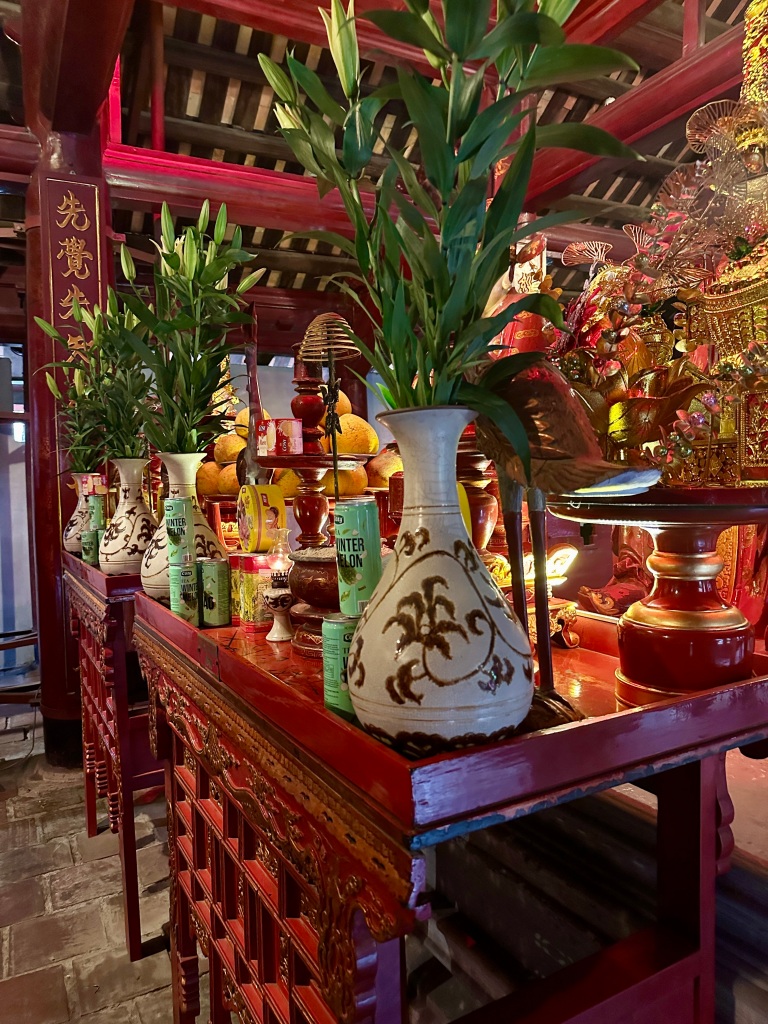
Following a fantastic lunch at a restaurant called Madam Hien, we visited the sobering Hoa Lo Prison site (known to Americans as the “Hanoi Hilton”), where American pilots were incarcerated during the war. (The prison had been built by the French to house Vietnamese rebels; the photos and descriptions of the conditions under the French are utterly harrowing.) The version of history presented at the prison is that the American POWs were well-treated and well-fed; any other view undoubtedly would be considered “alternative facts.”

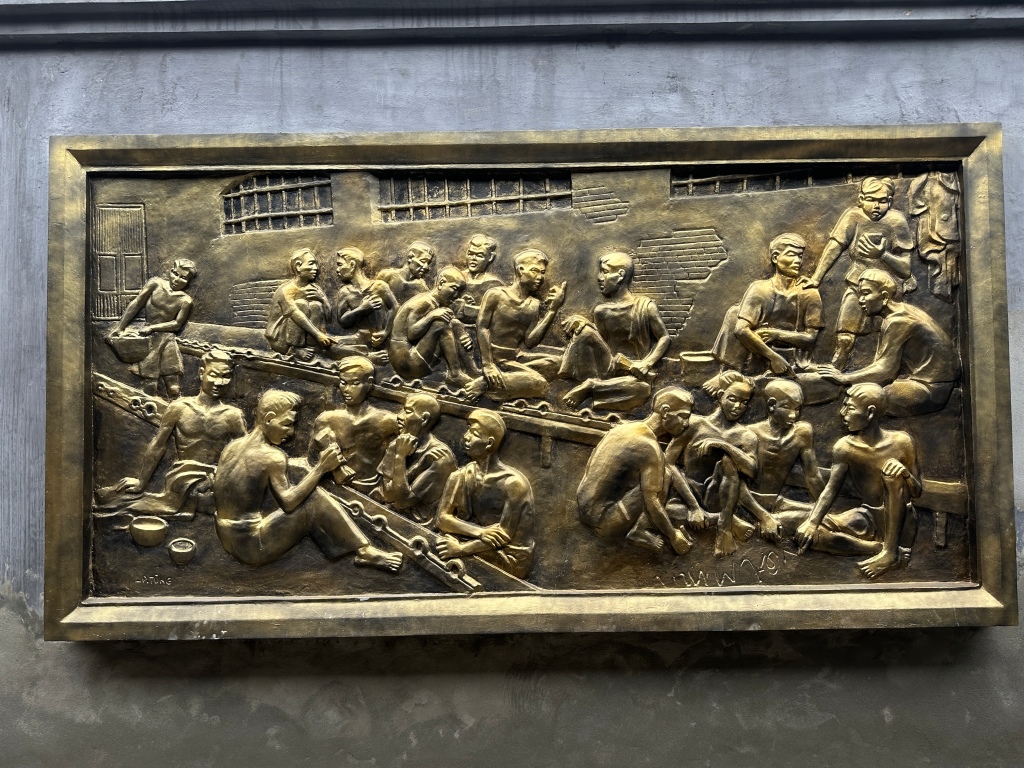
After the prison, we headed to the Old Quarter and a slow-motion but thrilling and picturesque cyclo ride betwixt and between the scooters and cars.
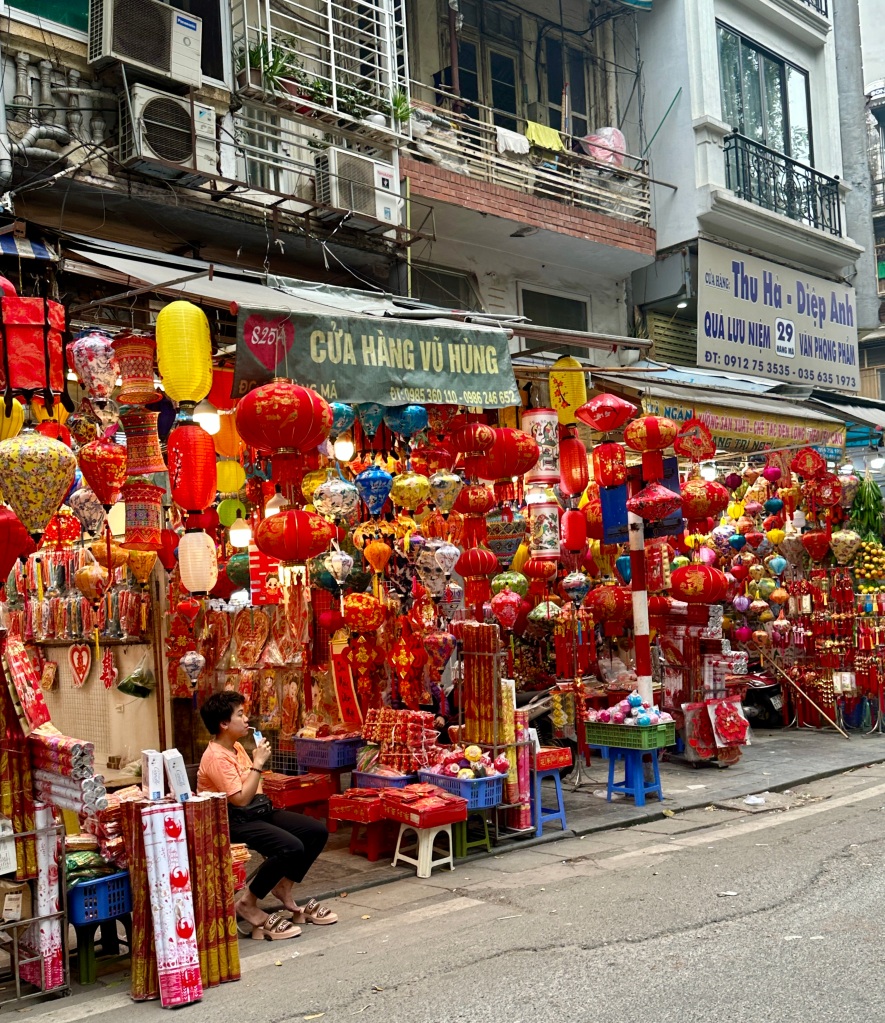

The ride ended at the Water Puppet Theater, where we enjoyed a remarkable puppet show illustrating a dozen or so Vietnamese folk tales, accompanied by a live orchestra.


The final event of the day was in equal measures inspirational and horrifying. An American veteran, Chuck Searcy, spoke about his experience in the war. A native of Georgia, Mr. Searcy enlisted in the Army convinced that the war was justified, but after a year spent in Saigon working in military intelligence he became vehemently opposed to the conflict and, upon returning home, worked to end American involvement. After returning to Vietnam in the early 1990s and hearing of the grievous injuries being caused by unexploded ordinance, he and other vets started RENEW, an NGO seeking to find and destroy the hundreds of thousands of bombs still buried in Vietnamese soil. Mr. Searcy recently received a letter of commendation from President Biden, and he was featured in an article in the March 15, 2024 issue of the New York Times, “An American Who Has Helped Clear 815,000 Bombs from Vietnam.”

Which brings us full circle: Almost fifty years after the end of the war, and despite all the death and destruction inflicted on the country, the Vietnamese have not only forgiven America, but the two countries enjoy an increasingly warm and mutually beneficial relationship. When I asked a few local people how they explained the nation’s unusual capacity for forgiveness, they pointed to the population’s Buddhist beliefs. Whatever the reason, I wish other nations would follow Vietnam’s example.
Our next stop is scenic and peaceful Ha Long Bay. Stay tuned!
Hanoi’s highlights beautifully captured in photos and phrases! Thanks for sharing.